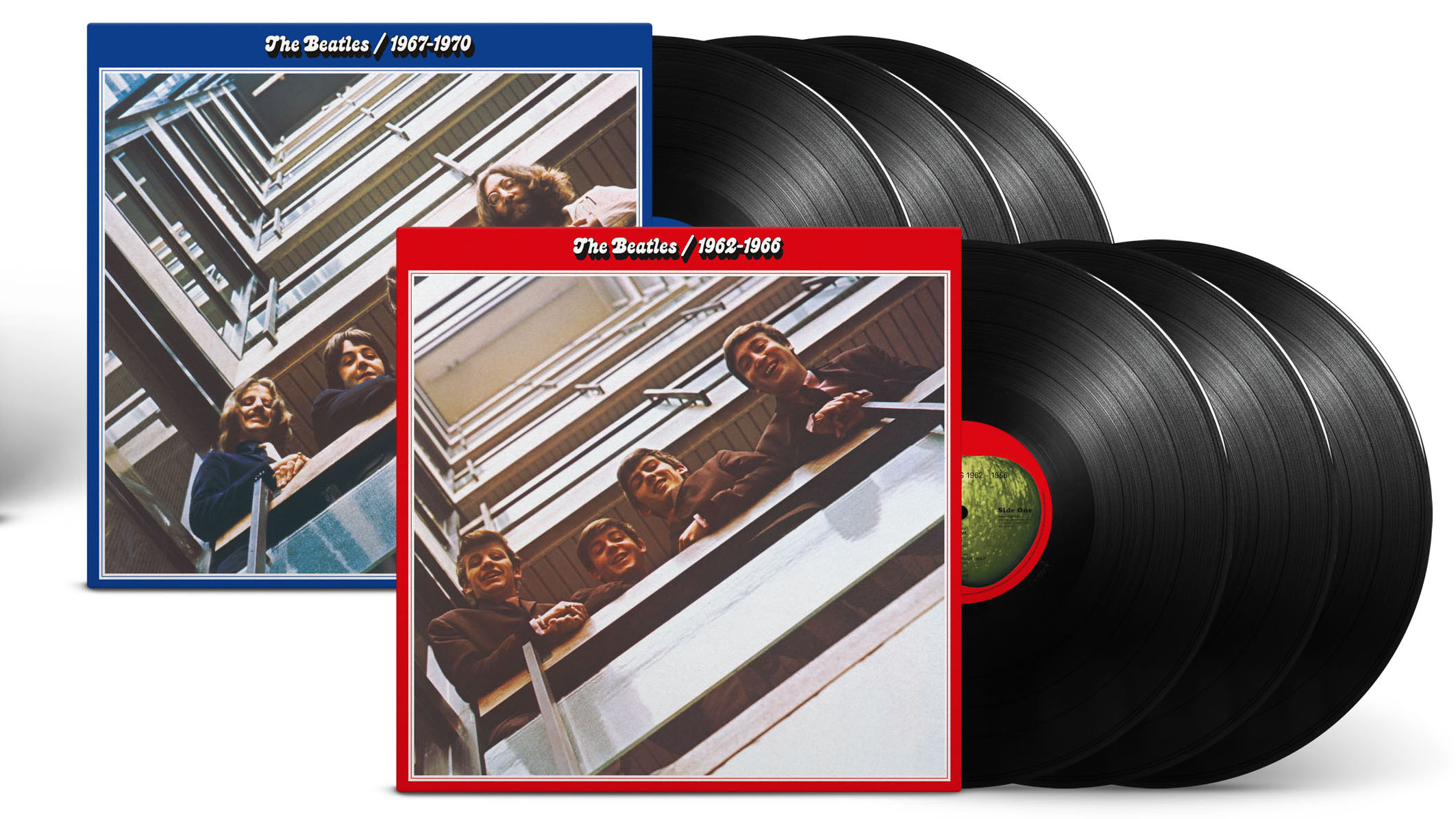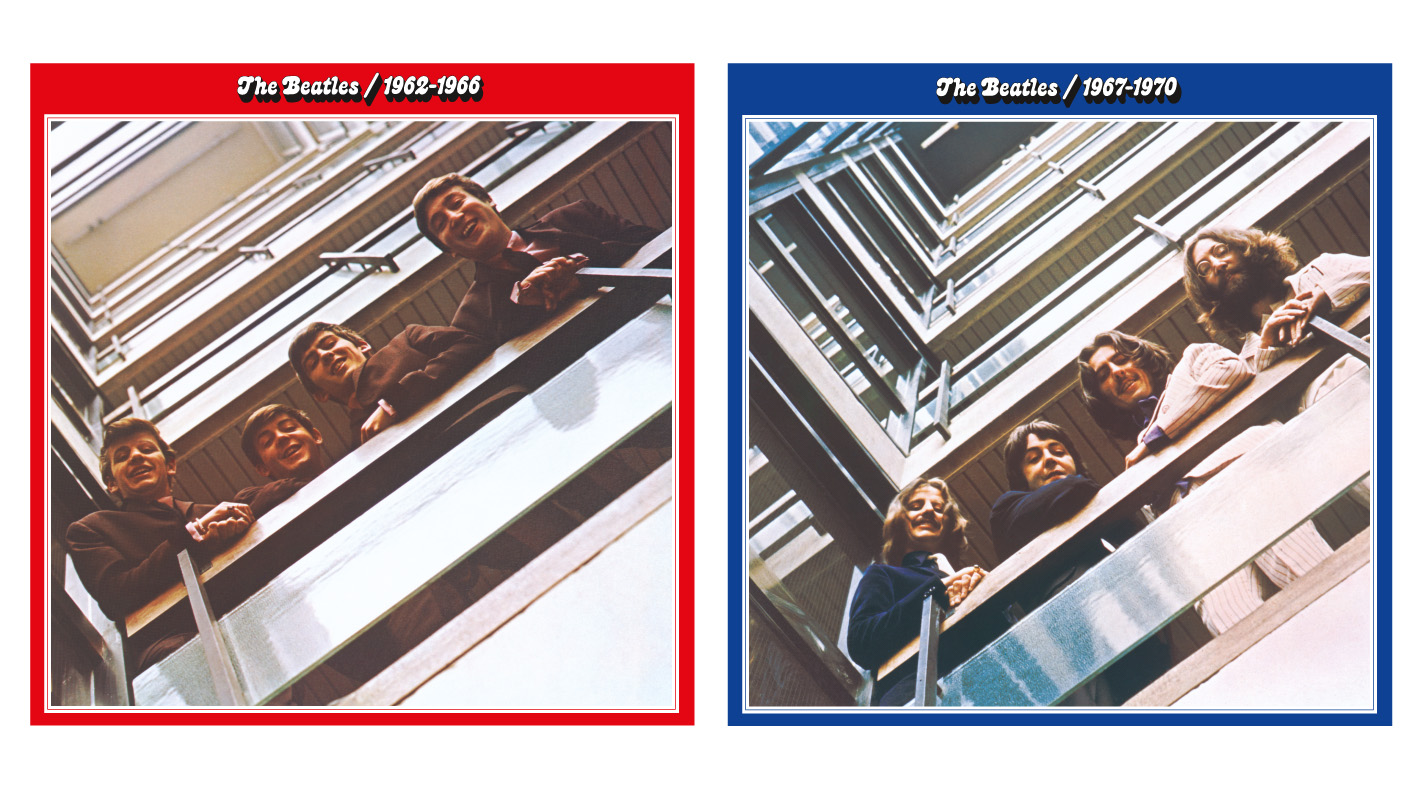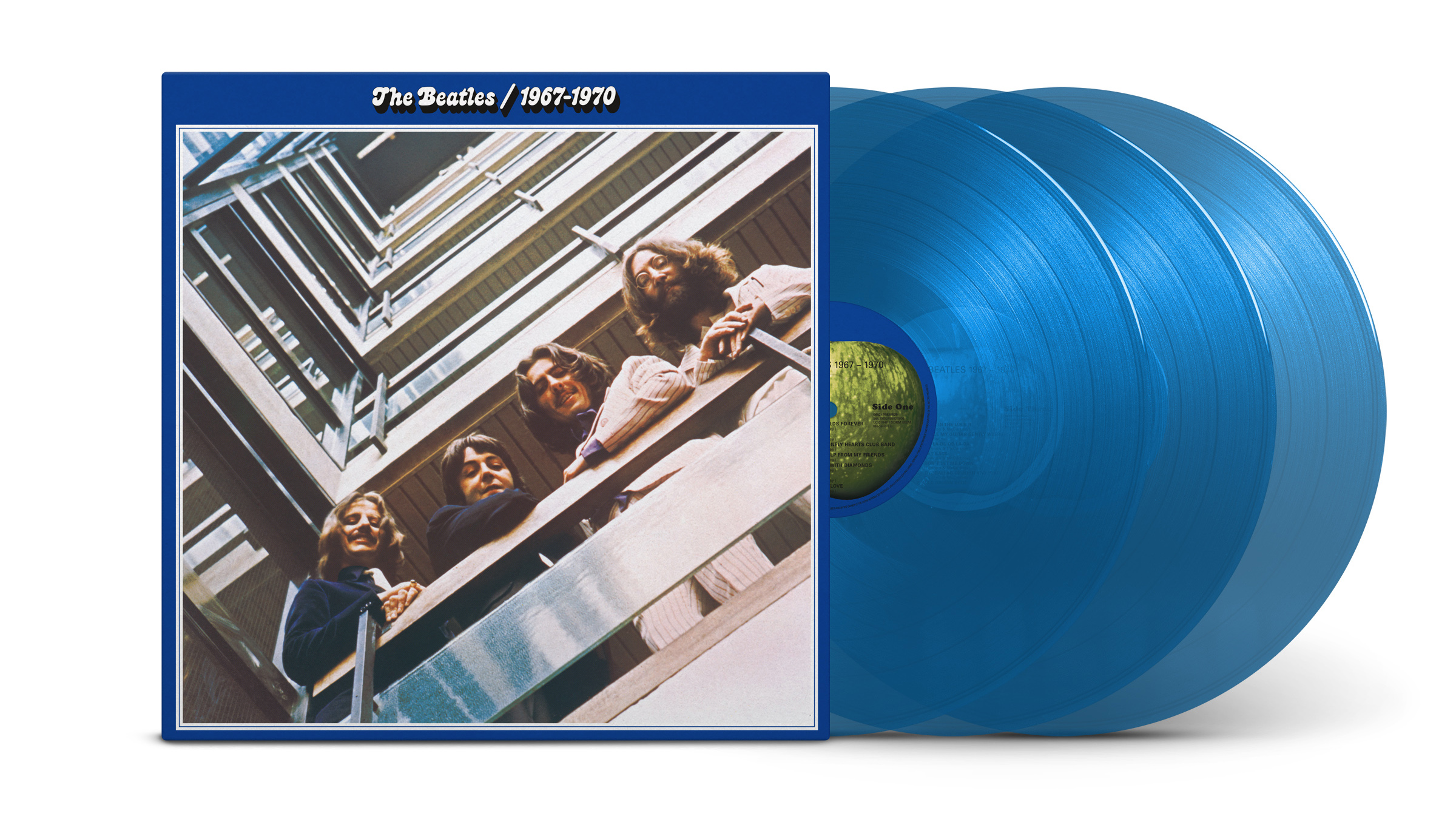"Now you have the sound of a band in a room. Four men in their early 20s hitting the shit out of stuff": Giles Martin on the separated and remixed Beatles Red and Blue albums
"You hear the crack of the snare. Ringo suddenly has a kick drum.”

For a certain generation (ahem), the Beatles' Red and Blue albums were the gateway into the world of the Fab Four, a 200mph crash course in the band's breakneck progress from cuddly toppermost of the poppermost to eye-popping psychedelia and beyond.
All this tech is simply to get rid of the tech that inhibited them in the beginning
Giles Martin
As Giles Martin, son of George and defacto audio curator of the band's legacy, told Virgin Radio this week, "Red and Blue are like proper, bonafide Beatles albums. They're like Queen's Greatest Hits or Bob Marley Legend."
Now, Martin, once again deploying the well-documented AI-powered audio-seperation software co-developed with Get Back director Peter Jackson, is behind remixed and expanded editions of 1962-1966 and 1967-1970, to give them their proper titles.
Most notable of the track listing changes is the inclusion of 'new' single Now and Then at the close of the now erroneously-named 1967-70, though there are plenty of other additions - 12 songs, including If I Needed Someone, Taxman and Twist and Shout have been bolted into Blue, while Red gets eight, including Blackbird, Dear Prudence and Within You, Without You.
Of more interest to us are the remixes. Of the total 75 tracks, 36 are present as all-new stereo and Dolby Atmos mixes, utilising that spooky AI tech we're now all so familiar with.
Speaking to The Times (paywall), Martin picked out four tracks he feels showcase the tech - Please Please Me, A Hard Day’s Night, Yesterday and Nowhere Man.
“This sounds far more aggressive now, the way it’s meant to," Martin says of Hard Days' Night. "It’s bonkers, but all this tech is simply to get rid of the tech that inhibited them in the beginning.
Want all the hottest music and gear news, reviews, deals, features and more, direct to your inbox? Sign up here.
"They made mono discs, squeezed and squashed, so you could not have bass, and drums were basically just a cymbal. Now you have the sound of a band in a room. Four men in their early 20s hitting the shit out of stuff.
"You hear the crack of the snare. Ringo suddenly has a kick drum.”

Martin is also clear on the wisdom, or otherwise, of dissecting old recordings with new tech. The Beatles are really the ideal subjects, he said, being “a band who become more beautiful when you open out the music. With some bands it’s a bit like opening up a body. “Oh God, stick it back together...”
"With the Beatles, though, it’s healthy. Yesterday is a good example of the tech. It was a three-track - Paul playing guitar, him singing, then the strings. Now we have strings both left and right, in stereo. It’s like an orchestra.”
Warming to his theme, Martin switches from the cadaver analogy to a more palatable baking one when discussing Nowhere Man: "The whole thing sounds more like the Byrds now... The best way of thinking about the technology is that it is like a sponge cake, and now there is just more air in the recordings. It’s a better baked cake. I’ve finally been given all the separated ingredients."
The newly expanded and remixed editions of 1962-1966 and 1967-1970 are available from 10 November.


I'm lucky enough to be MusicRadar's Editor-in-chief while being, by some considerable distance, the least proficient musician on the editorial team. An undeniably ropey but occasionally enthusiastic drummer, I've worked on the world's greatest music making website in one capacity or another since its launch in 2007. I hope you enjoy the site - we do.